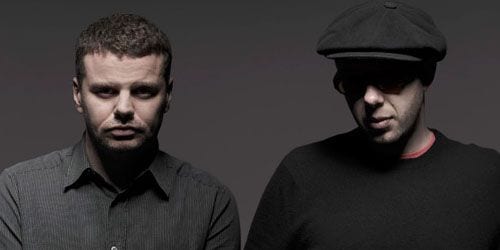
Hanna is an action film that looks like an art film. Or is it an art film that looks like an action film? When your central character — the one typically reserved for the rippling pecs, square jaw, and weather-beaten face — is a 16-year-old girl who looks like she’s on loan from Let the Right One In, it’s easy to get confused.
Clearing up the matter slightly is the mere idea of having a soundtrack by the Chemical Brothers. The Chemical Brothers have accomplished a lot in their 15-plus years of existence, not least managing to stay relevant once the MTV-driven phenomenon of “electronica” was dead and buried. Their consistency is admirable, and their ability to continue to create music that doesn’t rely on the recycling and repurposing of past work is impressive. Consistency and vitality aside, the Chemical Brothers have never shown much proficiency with subtlety, and their first attempt at a soundtrack is no exception.
To be fair, the Brothers do go in some surprisingly melodic directions here, experimenting with leitmotif and pure atmosphere in order to come up with something that sounds appropriately filmic. That they do so in a way that comes off as heavy-handed at best (and slightly insulting at worst) is where the problems lie. We know the story. We know that this is a child who is being forced to do things beyond what a typical child could (or should) be expected to do. And yet, the Chemical Brothers’ approach is to tell us this story that we already know, giving us a complete musical approximation of that which would be happening onscreen.
Most frustrating is the idea that a young girl — but not that young at 16, it should be noted — is repeatedly given “little girl” music. The “Hanna’s Theme” tracks that bookend the album are ghostly and spare, but prominently feature a saccharine melody that sounds like the singsong hummings of a little girl. It’s princess and fairy music, and no amount of dread bubbling beneath the surface will change that. The same problem is compounded throughout the album, as a carnivalesque motif is introduced in “The Devil is in the Details”, repeated and beefed up in “The Devil is in the Beats”, and finally twisted and finely ground in the final segment of “Interrogation / Lonesome Subway / Grimm’s House”, immediately following a passage with hints of “Hanna’s Theme”.
It sounds like lost innocence, it sounds like the squelching of youth’s hopes and dreams. Still, based on the themes presented, you’d think that an elementary-school-aged kid was at the center of the narrative, rather than a junior-in-high-school-aged one.
Surprisingly, the soundtrack is at its best when it goes for tuneless atmospherics, background noise that serves to build tension and fill in the gaps in quiet moments. The first minute or so of “Escape Wavefold” is a tightly-wound, spinning mess of beeps and blips that is at its best before it explodes into the vaguely hip-hop style beats the Chemical Brothers have done hundreds of times before. A pair of tracks toward the beginning of the soundtrack, “The Forest” and “Quayside Synthesis”, allow for an interesting contrast in pastoral harmony and the mechanical scrapes of machinery.
These shorter, more abstract tracks hint at subtlety, toying with the sort of atmosphere that can heighten the experience of a movie. By juxtaposing that atmosphere with too-obvious references to the youth of the protagonist and peppering action-movie adrenaline throughout, the Hanna soundtrack comes off as a missed opportunity. Front to back, it’s not a terrible listen, and it suffices as “movie background music”, but it’s not destined to be remembered as one of the great soundtracks of our time.

![Call for Papers: All Things Reconsidered [MUSIC] May-August 2024](https://www.popmatters.com/wp-content/uploads/2024/04/all-things-reconsidered-call-music-may-2024-720x380.jpg)



